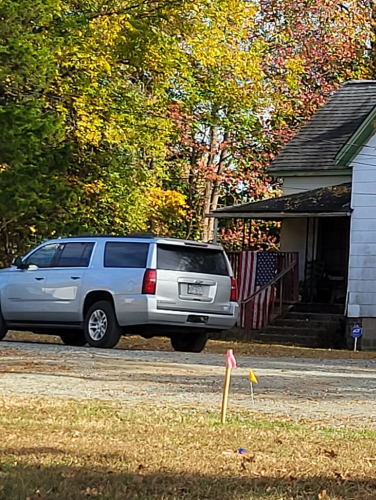
Ashford House
(ca. 1903)
Built as part of the Hoskins Cotton Mill village, the Ashford House is one of Charlotte’s last examples of early twentieth-century textile mill village housing for Black workers.
241 Hoskins Avenue Drive, Charlotte, NC 28208
The Ashford House was once part of the mill village associated with the Hoskins Cotton Mill which, when it opened in the early twentieth century, was one of the few cotton mills in the area to hire and construct houses for both White and Black workers. Most mills of that era were strictly segregated and only open to White workers. The six houses built for Black workers at the Hoskins Mill were identical to the houses constructed for White workers; however, they were built behind the mill, in a separate location from White housing, on an unpaved road near the railroad. Only two of those six mill houses remain.
Property Quick Links
Hoskins Mills, Inc. was organized by E. A. Smith, J. P. Wilson, and Jeremiah Goff in April of 1903. Their first mill was the Chadwick Mill, constructed in 1901 three and a half miles northwest of downtown Charlotte. After a few years of successful operation at Chadwick, the group started construction on Hoskins Cotton Mill nearby. Development of the mill village of Hoskins began as soon as construction for the mill started. Local contractor E. H. Overcash won the contract to build 80 houses around the mill and began work in 1903. All but six were built across the street from the mill or along the nearby side streets. Although constructed with the same style and materials, the six houses reserved for Black workers were located behind the mill, away from the other houses. Working conditions for the Black Hoskins Mill workers also were not equal. The mill’s Black employees were only permitted to work in the yarn room, segregated from White workers.
In 1908, Chadwick Mill and Hoskins Mill merged to become the largest textile corporation in North Carolina, the Chadwick-Hoskins Company. Together, those mills increased the county’s mill capacity by thirty percent. By 1920-1921, the two mills became part of Gossett Mills, a large regional chain of textile mills. Throughout the twentieth century, the village of Hoskins flourished, enticing workers to come to the area to work and settle down. Hoskins Cotton Mill was purchased by the Spatex Corporation in 1948. By that time, Hoskins Mill was operating some 600 looms and 30,000 spindles to produce carded and combed lawns and broadcloths. In 1949, while modernizing the mill’s technology, Spatex also decided to follow the lead of other local mills and sell its mill houses to the employees who had been occupying them as tenants. The Hoskins mill houses were purchased under a plan which gave the residents 66 months to pay the $2,000 purchase price. One of the families whose dream of homeownership thereby came true was the Ashford family, a Black family living at 241 Hoskins Avenue Drive.
Eugene and Minnie Ashford began renting the house soon after they were married in 1926. In their two-bedroom home, Eugene and Minnie birthed and raised ten children. All of their children graduated high school, and many went on to college. Several of the family members worked on and off at the mill, but also worked other jobs in the community. On June 25, 1949, Eugene and Minnie Ashford purchased the house from Spatex. Five years later, the family enclosed the rear porch to accommodate a kitchen, mudroom, and bathroom. The Ashford family has since lived in the house for four generations.

